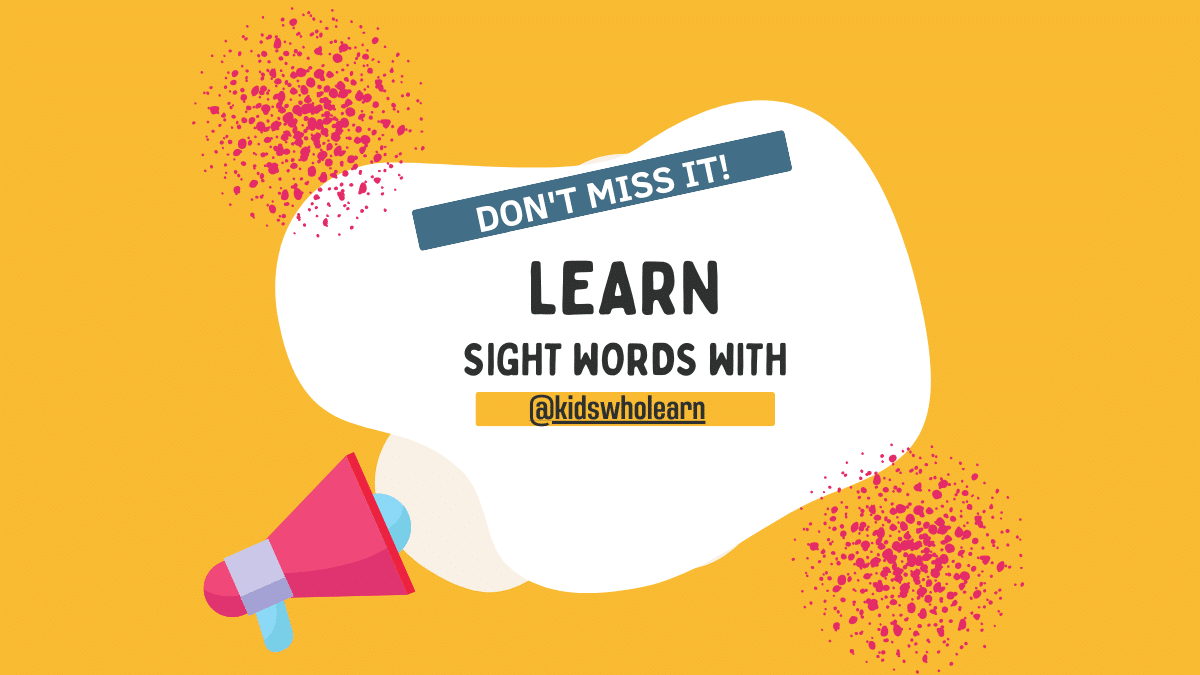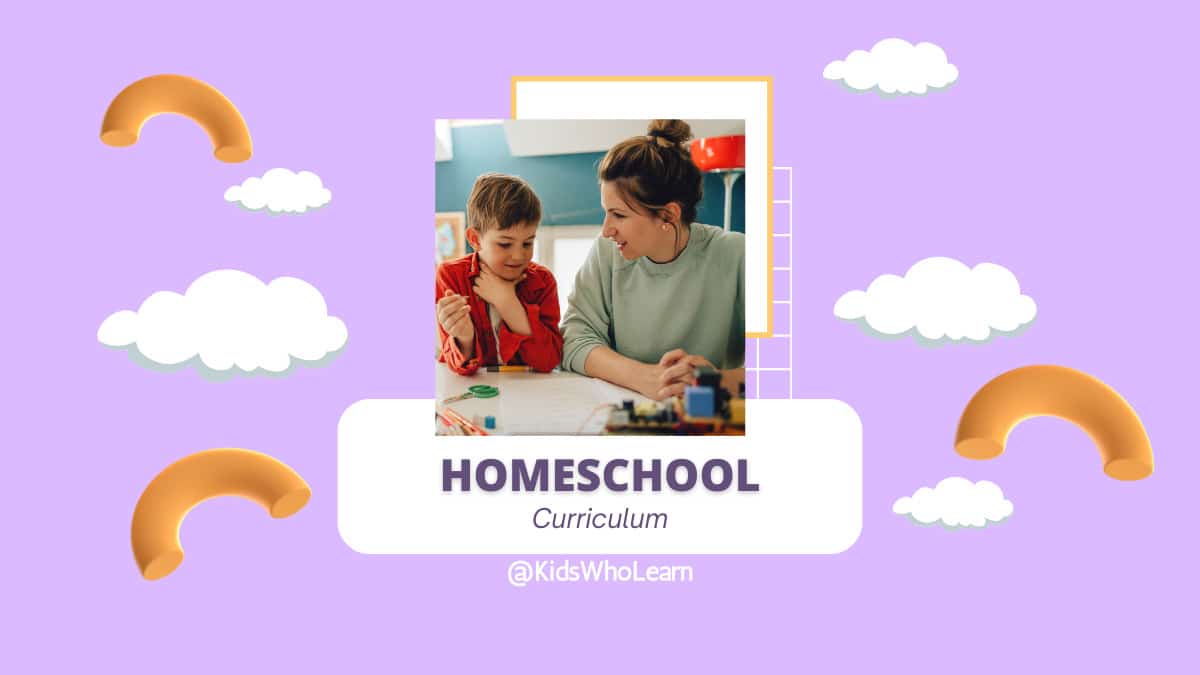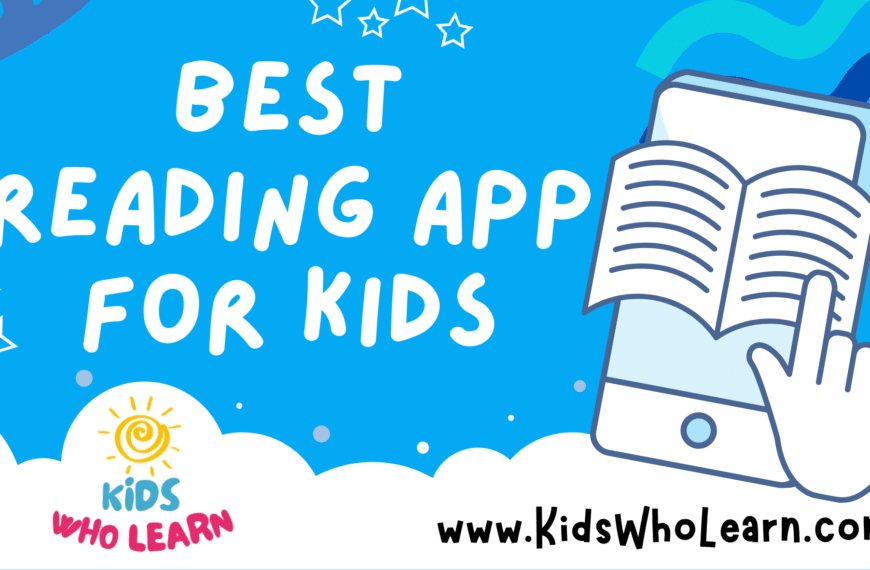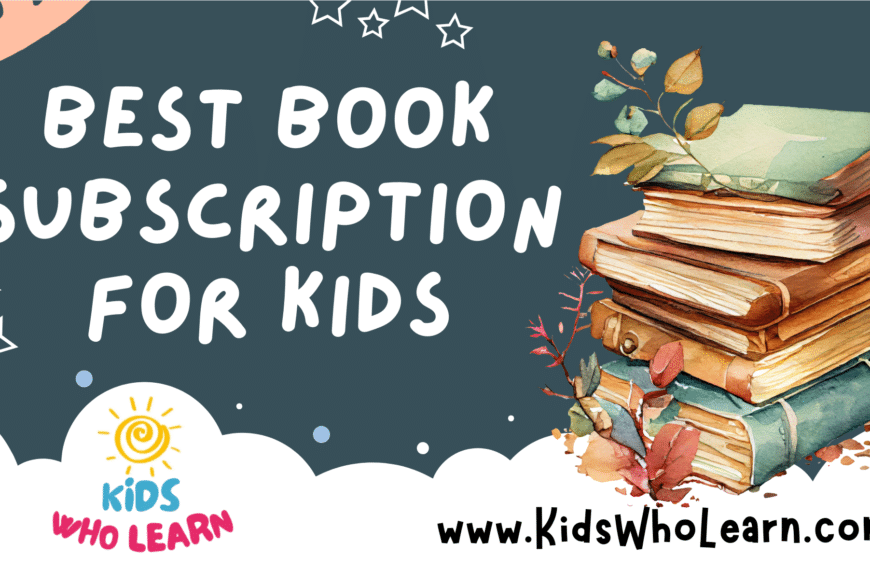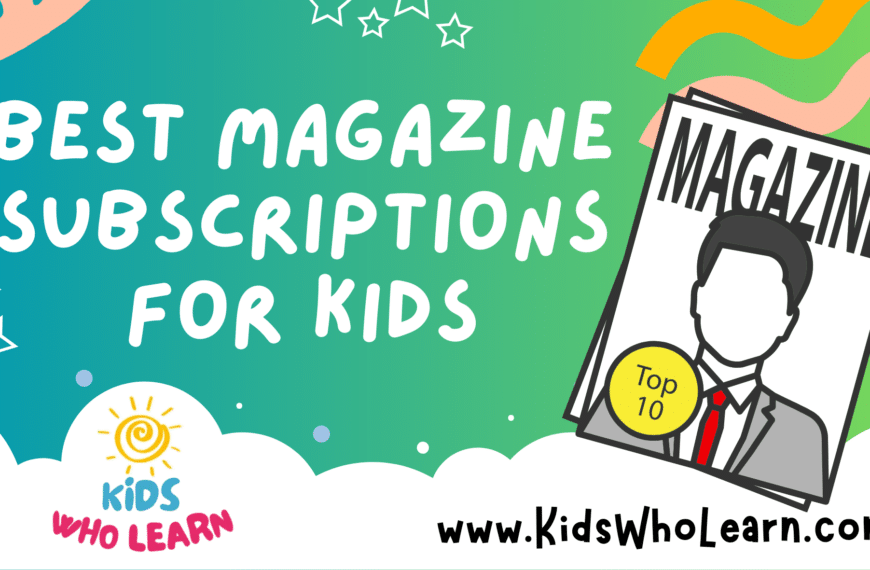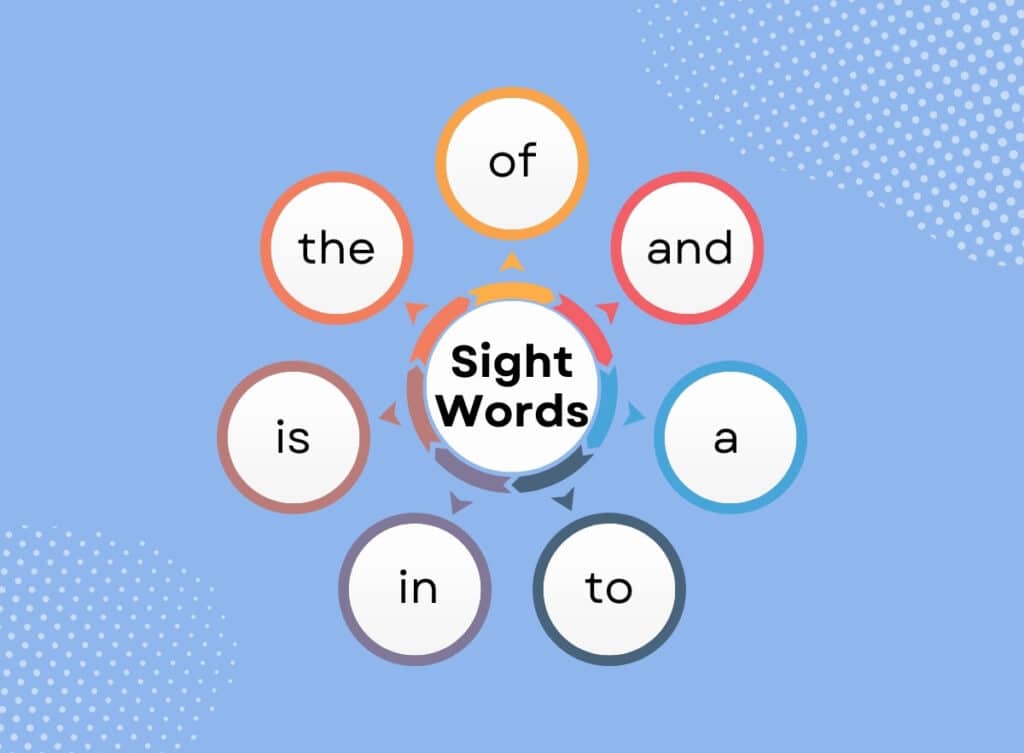
Teaching sight words is essential to helping young students learn to read and write. Sight words, also known as high-frequency words, are words that frequently appear in written and spoken English. Sight word instruction focuses on teaching students to recognize these words on sight without sounding them out. Here you will learn how to teach sight words.
This article will explain how to teach sight words and the most effective strategies for teaching sight words and letter sounds to young students.
What Are Sight Words?
Sight words are words recognized instantly by a reader without the need to decode or sound out individual letters. These words are also high-frequency words because they frequently appear in written text. Examples of sight words include words like “the,” “and,” “of,” “to,” “in,” “that,” and “it.”
Sight words are essential for early literacy development because they comprise many words in written text. By learning to recognize these words quickly and automatically, young readers can improve their reading fluency and comprehension. Teachers often use various methods, such as flashcards, games, and repetitive reading, to help students learn sight words.
Why Are Sight Words Important?
Sight words are important for several reasons:
- Reading fluency:
Sight words are some of the most common words in English, so knowing them automatically helps improve reading fluency. When children can recognize these words quickly, they can read more smoothly and faster, enhancing their overall reading experience.
- Comprehension:
Because sight words are so common, they frequently appear in written text. When children can recognize sight words quickly and accurately, they can focus on the other words in the text, which helps improve comprehension. They can understand the overall meaning of the text more easily and can better remember what they have read.
- Confidence:
Learning sight words can help children feel more confident about their reading abilities. When they can read more fluently, and with greater comprehension, they are more likely to enjoy reading and view themselves as successful readers.
- Vocabulary:
Sight words often represent essential concepts and ideas, which can help build vocabulary. Children who recognize sight words have a better foundation for understanding and learning new words as they encounter them in their reading.
Overall, sight words are essential to early literacy development, and mastering them can help children become more confident, fluent, and successful readers.
What Are The Most Effective Strategies for Sight Word Instruction?
There are several effective ways to teach sight words to young students. Here are some strategies that teachers and parents can use:
- Repetition:
You should teach sight words through repetition. Repeated exposure to sight words in various contexts can help students remember them more easily.
- Multisensory activities:
Engage students in activities that involve multiple senses, such as sight, touch, and hearing. For example, have students use their fingers to trace the letters of a sight word while saying the word out loud.
- Flashcards:
Flashcards are a popular tool for teaching sight words. Show students the word on one side of the card and have them say it aloud or spell it on the other side.
- Games:
Sight word games can make learning sight words more engaging and fun. For example, have students play memory-matching or sight word bingo games.
- Contextual learning:
Teach sight words in the context of reading and writing. For example, have students write sentences that use sight words or identify sight words in a book they are reading.
- Phonics instruction:
Teach phonics and sight words to help students understand how letters and sounds work together to form words.
- Use technology:
Interactive websites and apps can be a fun and engaging way to teach sight words. Many of these programs offer games and activities that allow students to practice recognizing and using sight words in various ways.
It’s important to remember that every child learns differently, so using various strategies and techniques is essential to help students master sight words.
How Do You Teach Sight Words?
- Choose sight words:
Select a list of new words appropriate for your student’s age and reading level.
- Introduce sight words:
Introduce the sight words to students using various methods such as flashcards, posters, or writing them on the board.
- Model the words:
Model the pronunciation and spelling of each sight word, and have students repeat them back to you.
- Use in context:
Show students how to use the sight words in context, such as in a sentence or short story. This practice will help them understand the meaning of the words.
- Practice, practice, practice:
Have students practice reading sight words and have them write sight words repeatedly using various activities such as games, flashcards, worksheets, and interactive online resources.
- Review regularly:
Regularly review sight words with students to reinforce their learning and help them remember the words over time.
- Encourage independence
As students become more familiar with sight words, encourage them to use them independently in reading and writing.
Remember, teaching sight words requires patience, consistency, and various methods to help students master the words. By providing regular opportunities for practice and reinforcement, students can become confident and proficient in recognizing and using sight words.
How Do I Know Which Sight Words to Use When Choosing Sight Words?
When choosing sight words to teach, it’s essential to consider your students’ age and reading level. Generally, sight words are selected based on their frequency of use in written and spoken language and their importance in helping students build foundational reading skills.
You can use many lists of sight words as a guide for selecting words to teach. Some common sight word lists include the Dolch sight word list and the Fry sight word list.
The Dolch sight word list includes 220 words divided into five levels, from pre-primer to third grade. The list consists of frequently used words such as “the,” “and,” “you,” and “said.”
The Fry sight word list includes 1,000 Fry words divided into ten levels, ranging from the most common to more complex. The first 100 Fry words on the list comprise approximately half of all written material, while the first 300 Fry words comprise about 65%.
When selecting sight words to teach, it’s also essential to consider the reading level of your students. For example, if you teach beginning readers, you might focus on the pre-primer and primer-level sight words. If you are teaching more advanced readers, you might concentrate on higher-level sight words.
Ultimately, the best approach is to choose sight words appropriate for your student’s age and reading level and to provide regular opportunities for practice and reinforcement to help them master these words.
What Are The Most Effective Ways of Introducing Sight Words to Students?
There are many effective ways to introduce new words to students. Here are a few ideas:
- Use flashcards:
Flashcards are a great way to introduce new words. Show the flashcard to the student and have them say the word aloud. You can also use flashcards to play sight word games like memory or Go Fish.
- Write the words on the board:
Write the sight word on the board and have the students say the word aloud. Then, ask them to spell the word out loud and write it on the board.
- Use picture clues:
Provide students with picture clues to help them remember sight words. For example, if you are teaching the word “cat,” show a picture of a cat next to the word.
- Use gestures and movements:
Use gestures and actions to help students remember sight words. For example, for the word “jump,” you might have students jump whenever they say it.
- Use technology:
Many online sight word games and apps can help students learn sight words. For example, Sight Word Ninja is a fun game that challenges students to identify and slice sight words.
- Read aloud:
Read books that contain sight words aloud to students. This practice will help them see the terms in context and understand their meaning.
- Build sentences:
Have students use sight words to build their own sentences. This practice will help them understand how they use the words in context.
Remember, the key to introducing sight words is to make them fun and engaging. Students can become confident and proficient in recognizing and using sight words by using various techniques and providing regular opportunities for practice and reinforcement.
What Is The Most Effective Way to Use Sight Words In Context?
Using sight words in context is essential to developing reading fluency and comprehension.
Here are some practical ways to use sight words in context:
- Read books aloud:
Read books aloud to students that contain sight words they have learned. This practice will help them see the words in context and understand their meaning.
- Use sentence strips:
Write sentences containing sight words on sentence strips and have students read them aloud. You can also have them use the sentence strips to practice building their own sentences.
- Play games:
Play sight games that involve using sight words in context. For example, you can play “I Spy” and have students find objects in the room that contain sight words.
- Write stories:
Have students write their own stories using sight words. This practice will help them understand how to use the words in context and develop their writing skills.
- Use word walls:
Create a word wall with sight words that students have learned. Encourage students to use the words on the wall in their writing and reading.
- Use guided reading:
Use guided reading to help students practice reading words in context. Provide them with support and guidance as they read books that contain sight words.
Remember, the key to using sight words in context is to provide regular opportunities for students to see and use the words in various ways. Students can become confident and proficient in using sight words in context using multiple techniques and providing regular opportunities for practice and reinforcement.
What Are the Most Effective Ways to Practice Sight Words?
Practicing sight words is essential for developing reading fluency and comprehension. Here are some practical ways to practice sight words:
- Flashcards:
Use flashcards to practice recognizing and reading words. Have students say the word aloud as they see the flashcard.
- Word games:
Play sight word games that involve sight words such as Bingo, Go Fish, or Memory. These games make learning sight words fun and engaging.
- Read aloud:
Read books that contain sight words aloud to students. This practice will help them see the words in context and understand their meaning.
- Writing practice:
Have students practice writing sight words. You can provide them with a list of sight words to copy or have them write sentences containing sight words.
- Word searches:
Create word search puzzles that contain sight words. This practice will help students practice recognizing and reading the words in a fun way.
- Sentence completion:
Write incomplete sentences that contain sight words and have students complete the sentences. This practice will help them understand how to use the words in context.
- Word walls:
Use word walls to help students practice recognizing and reading words. Encourage them to use the words on the wall in their writing and reading.
Remember, the key to practicing sight words is to provide regular opportunities for students to see and use the words in various ways. Students can become confident and proficient in recognizing and using sight words by using multiple techniques and providing regular opportunities for practice and reinforcement.
How Often Should Students Review Sight Words to Reinforce Their Learning?
The frequency of sight word review depends on the individual needs of each student. However, as a general rule, it is recommended that students review sight words regularly to reinforce their learning.
Young learners should review sight words daily, for a few minutes each day. This practice will help consolidate their learning and ensure that they remember the words they have learned. As students become more proficient with the words, the frequency can be reduced to a few times a week.
It is important to note that sight word review should not be a one-time event. Students should review sight words regularly, and as students learn new words, they should be added to the review list. Teachers and parents can use tools and techniques such as flashcards, games, writing activities, and reading practice to reinforce sight word learning.
In addition to regular review, providing students with opportunities to use sight words in context is essential. This practice will help them to develop their reading fluency and comprehension. By regularly incorporating sight words into reading and writing activities, students can reinforce their learning and become confident and proficient in using sight words.
How Do You Encourage Independence with Sight Words?
Encouraging independence with sight words is vital for helping students to develop confidence in their reading skills. Here are some ways to promote independence with sight words:
- Sight word lists:
Provide students with sight words and encourage them to independently practice reading and writing the words.
- Independent reading:
Provide students with books that contain sight words and encourage them to read independently. This practice will help them to see the words in context and build their reading fluency.
- Word walls:
Create a word wall with sight words that students have learned. Encourage students to use the words on the wall in their writing and reading.
- Writing practice:
Have students write sentences containing sight words on their own. This practice will help them apply their sight word knowledge in context.
- Self-assessment:
Encourage students to assess their own sight word knowledge by asking them to read a list of words and identify the ones they know. This practice will help them to identify areas where they need to focus their learning.
- Peer support:
Encourage students to support each other in their sight word learning. For example, they can partner and quiz each other on sight words.
By providing students with opportunities to work independently with sight words, you can help them to take ownership of their learning and develop confidence in their reading and writing skills.
How Do You Teach Sight Words to Struggling Readers?
Teaching sight words to struggling readers requires a targeted approach that addresses the specific needs of each student. Here are some strategies for teaching sight words to these students:
- Start with high-frequency words:
Begin by teaching high-frequency words essential for reading and writing. Teach these words in isolation and then gradually introduce them in context.
- Use multisensory activities:
Engage readers in multisensory activities that involve seeing, hearing, and feeling the words. For example, have students trace the words with their fingers, say them out loud, and write them on sand or a whiteboard.
- Introduce one word at a time:
Introduce one sight word at a time and focus on it until the student can recognize it without hesitation. Then move on to the next word.
- Build on existing knowledge:
Connect new sight words to words that the struggling reader already knows. For example, if a student understands the word “cat,” connect it to the word “hat,” which has a similar spelling pattern.
- Use games and activities:
Incorporate games and activities that make learning sight words fun and engaging. For example, use a memory game or a scavenger hunt to help students practice recognizing sight words.
- Provide frequent opportunities for practice:
Offer regular opportunities for readers to practice sight words in various contexts, such as in stories, sentences, and word lists.
- Celebrate success:
Celebrate and acknowledge the achievements of readers as they learn sight words. This positive reinforcement can help to build confidence and motivation.
Teachers and parents can help struggling readers develop the essential sight word recognition skills needed to improve their reading and writing abilities by using these strategies for teaching sight words.

